Menu
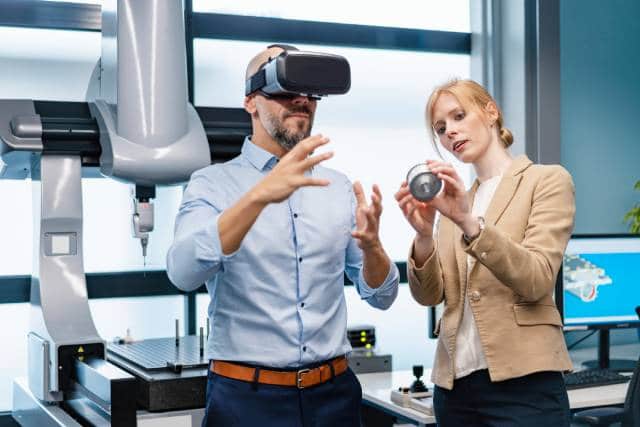
The Best Ways XR Is Used in Healthcare Workforce Training and Education Skills (2022)
- June 7, 2022
- 1:34 am
Education and training are a key component of NHS clinical governance. As demonstrated by the recent COVID-19 pandemic, it is vital to ensure that the health and care workforce are responsive to changes in patient needs and in healthcare delivery...
Table of Contents
XR for Healthcare Workforce Training and Education Skills
The Easiest Way To Understand XR for Healthcare Workforce Training and Education Skills

Below, we dive into the uses of XR for Healthcare Workforce Training and Education Skills.
About The Author
HAUD’s Dr Sajini Wijetilleka is the Education Lead for Acute Medicine at London North West Hospitals NHS Trust (LNWH).
She has considerable experience with VR from both a trainee and a trainer perspective and uses her expertise with the development side and user integration.
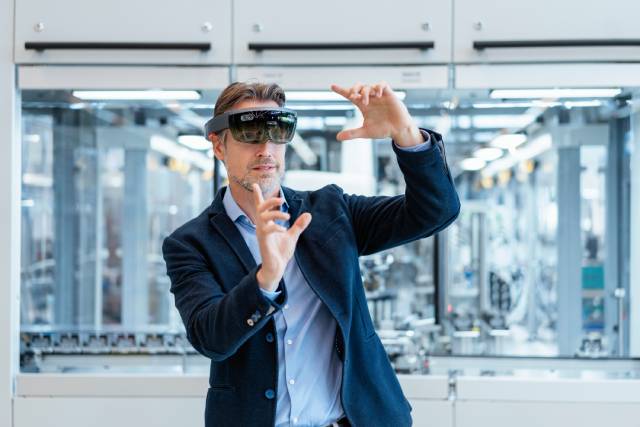
Why XR is Vital in Healthcare Workforce Development and Training
Over 1.3 million people work in the health service in England and Health Education England (HEE) notes that over 160,000 students are studying to be part of the health and care workforce.
Education and training are a key component of NHS clinical governance.
As demonstrated by the recent COVID-19 pandemic, it is vital to ensure that the health and care workforce are responsive to changes in patient needs and in healthcare delivery.
Travel restrictions placed by COVID-19 and Brexit have resulted in shortages in the supply of clinical workforce.
Service delivery prioritised defeating COVID-19 so many patients with chronic/non-emergency presentations of serious illnesses were disadvantaged as a result.
The disruption to training (staff redeployment to COVID areas) caused by the pandemic has meant that clinical placements have been halted for junior student doctors and physical simulation sessions were reduced (or indeed stopped in my workplace).
The pandemic has meant a lack of diversity of clinical cases meant that trainees were not exposed to a wide range of different types of patients.
Alternative clinical teaching delivery methods were required in order to continue professional development.
In my workplace, acute medicine teaching took place via MS teams to ensure that staff were able to teach junior doctors and nurses about different specialities whilst keeping them up to date with contemporary COVID-19 guidance.
Distance learning helped to maintain bubbles and social distancing; thus reducing the spread of COVID-19 amongst LNWH trust staff.
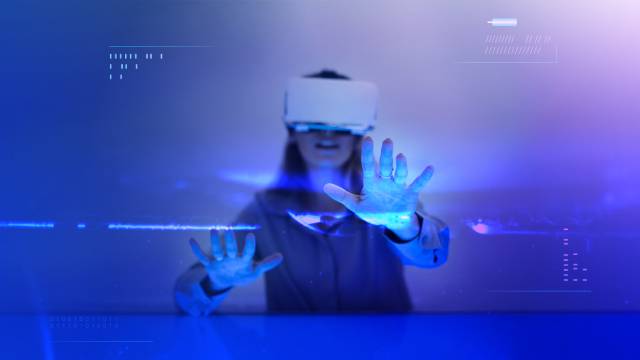
Simulation-Based Education (SBE)
SBE is a popular and evidence-based technique for delivery of health and care education in the UK.
Dr Sajini from HAUD has been involved with this since her student doctor days in the early 2000’s, where she trialled surgical simulators as a participant.
Specialities she observed were general surgery (cholecystectomy), ophthalmology (vitreo-retinal) and urology.
She is currently involved with the ‘Med Reg Ready’ Simulation course at LNWH and can visualise how XR technologies will become an essential method to support the delivery of healthcare training.
Participants are energised by the confidence gained by successfully priming themselves by ‘seeing’ and ‘doing’ a diagnostic plan or practising a procedure in the virtual setting prior to replicating it on real-life patients.
XR technology will enable accessibility and replicability of a range of environments and scenarios.
These factors alone offer vital potential for healthcare interventions, more so those affected by the pandemic to support the continuing education and development of the global health and care workforce.
HAUD is keen to demonstrate that access to VR environments is affordable, perfect for the use of XR’s wider application in education, given it can be delivered remotely, at scale and with less risk.
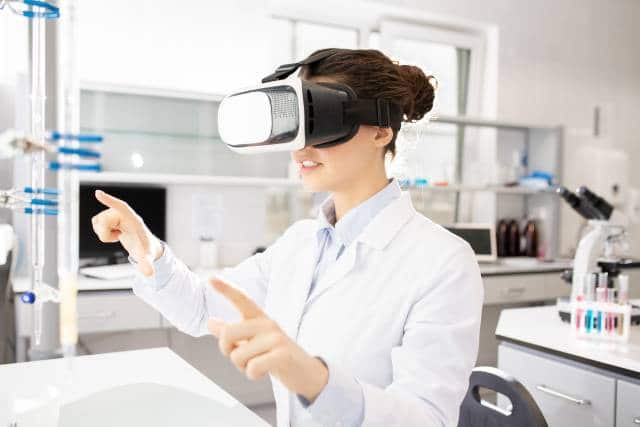
How XR is Transformative for Medical Education
XR training is transforming the way health and care students have learnt over the past two decades.
VR-trained students are faster and more accurate in performing surgical procedures.
XR technologies, such as those offered by HAUD improve upon VR to enable better experiential and collaborative learning.
XR supports better contextual learning that aid the learning process and improve student motivation (Logeswaran et al., 2020; Mantovani et al., 2003; V. Pantelidis, 2009).
Students used AR and VR to simulate realistic yet risk free clinical situations from highly complex surgeries to urgent and emergency care.
They explored virtual cadavers to learn anatomy and physiology.
Hand-eye coordination and manual dexterity improves with practical simulation training.
CT scans and angiograms can be combined to create three-dimensional models for operators.
Surgeons can practice by moving through each step of a surgical procedure, close up and in real time, in collaboration with others remotely, versus preparing for operations by looking over static images.
From an expedition, disaster and military medical perspective, immersive technologies provide a unique opportunity for replication of dangerous, difficult and inconvenient locations.
This has the potential to improve accessibility, reduce gaps or inequalities in training for staff on/preparing for deployment and improve patient safety.
Professor Ara Darzi’s groups have shown XR training is transforming the way health and care students learn today.
Research shows surgical training simulators using virtual and haptic feedback functions are a viable alternative to real-world surgical training.
In fact, a recent study from Harvard Business Review showed that VR-trained surgeons had a 230% boost in their overall performance compared to their traditionally-trained counterparts.
The former were also faster and more accurate in performing surgical procedures.
XR technologies also enable better experiential and collaborative learning methods, promoted by constructivist learning models that have been shown to be more effective than traditional or other digital education methods (Kyaw et al., 2019; Logeswaran et al., 2020).
There is also evidence to support better contextual learning with XR technologies that aid the learning process and improve student motivation (Logeswaran et al., 2020; Mantovani et al., 2003; V. Pantelidis, 2009).
Students are using AR and VR to simulate realistic yet risk free clinical situations from highly complex surgeries to urgent and emergency care, and exploring virtual cadavers to learn anatomy and physiology.
Trainee nurses can develop hand eye coordination using precise medical instrumentation in AR and MRIs.
CT scans and angiograms can be combined to create three-dimensional models for radiographers.
Surgeons can practice by moving through each step of a surgical procedure, close up and in real time, in collaboration with others remotely, rather than just preparing for a surgery by looking over static images.
Immersive technologies provide a unique opportunity for replication of dangerous, difficult and inconvenient locations.
This has the potential to improve accessibility, reduce inequalities in training and improve patient safety.
Professor Ara Darzi’s ‘Da Vinci’ group demonstrated how XR can be adapted for use in remote surgery.
Video demonstrations of surgical techniques and broadcasts of operations via mobile networks have been available for decades.
The incoming 5G ‘tactile Internet’ would enable a physician to perform a procedure on a patient who is in a different location.
A surgeon’s movements at one site would be recreated in real-time by robotic surgical equipment at another site, an innovation that could particularly benefit patients in rural areas or smaller regions where surgeons specialising in complex procedures (e.g. neurosurgery in remote Africa/Australia) and Flying Doctors may not be readily available.
Being able to ‘Live Stream’ operations to staff unfamiliar with the operating theatre leads to increased levels of respect among staff, as viewers develop a deeper understanding of the process and staff roles/expected behaviour during surgical procedures.
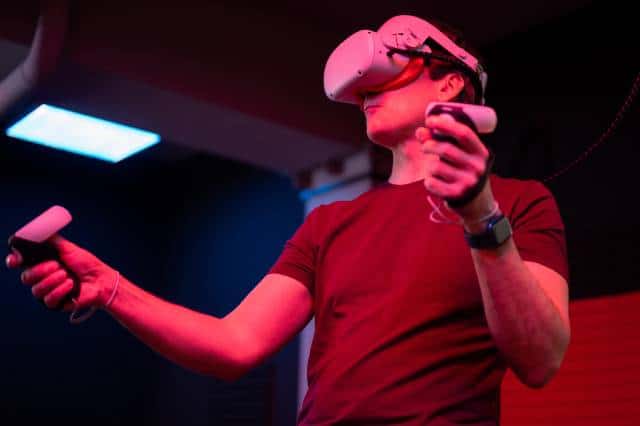
Challenges and Opportunities in Healthcare Education
There is unrivalled potential for XR training in health and care.
The exploration of XR technologies in healthcare education and training is being driven by a number of factors.
The time afforded to training within clinical settings is stagnant or decreasing, partly due to limitations placed by COVID-19 and the nationwide adoption of the European Working Time Directive.
NHS England acknowledges that excessive working hours increase the risk of making clinical errors and compromises patient safety.
This has had the untoward effect of reducing clinical exposure which has been the backbone of apprentice-style vocational training to date.
The UK suffers from a mismatch between the supply of healthcare professionals and the demand for their services, which produces greater pressure on limited training time – over 30% of frontline clinicians are due to retire by 2030; which means even fewer trainers will be available to train over time.
Financial burdens from education and training on the healthcare system are significant so more cost-effective, remote and accessible solutions are required in order to free up clinician time to see patients.
The bureaucracy involved in current governance and funding streams is slowing down the ability to develop and distribute the broad range of XR solutions required to meet future health and care training requirements.
As discussed in the surgical simulation studies; XR offers ways to practise communication skills, diagnostic approaches and practical procedures before clinicians see a patient.
Temporal and geographical barriers are removed so that healthcare professionals can learn in their own time, at their own pace and unconstrained by physical locations such as the hospital.
The availability of XR facilitates the dissemination of knowledge and skills from centres of excellence ensuring democratisation and accessibility in training across the NHS/in remote or dangerous locations.
This has the potential to improve accessibility, reduce inequalities in training and improve patient safety – Imperial College has demonstrated this beautifully with its Virtual Ward Round Study and Alder Hey Children’s Hospital have used Hololens 2 to seek second opinions during Paediatric Cardiac Surgery prior to changing operative course during the COVID-19 era.
The University of Leeds has used Medical Realities in the Pandemic to demonstrate how pathology laboratories and investigations work during times where infection control prevented conventional footfall into the hospital laboratories.
Delivering the training in VR removed the risks posed by physical tours of sample cross-contamination, patient confidentiality breaches and infection control.
Offering the experience in VR meant that all Leeds students had an equitable experience regardless of where their clinical placement takes place.
Lecturers discovered that VR increased student awareness of the pathology specialty as a future career, with students indicating in feedback that they were significantly more likely to choose it as their specialty.

The Challenges of Adopting XR for Healthcare Workforce Training and Education Skills
COVID-19 has accelerated how alternative means of education and training have been sought.
XR provides an opportunity to cost-effectively support the training recovery of the health and care workforce, particularly as there has been so much disruption to training due to the pandemic.
Developing XR technologies will require a combination of contemporary evidence-based practice, real world use cases and dissemination of best practice.
The main elements to review alongside the design and implementation of XR technologies in healthcare education and training are learning needs, technological capabilities, wider needs assessment, simulation and evaluation.
When patient safety is concerned it is imperative that with the adoption of these technologies, there must be investment in rigorous research and testing into design, implementation and evaluation.
When filming realistic 360 video of upsetting clinical/personal scenarios it is important to consider that the learning material may trigger lived experiences of participants, so appropriate support mechanisms may need to be put in place.
Designing immersive experiences should ideally follow a learner-centric approach rather than a technology-driven one to avoid the negative outcomes on learners if not designed properly, such as simulator sickness, postural stress and eye fatigue.
Collaborative infrastructure must be in place (such as the simulation suite at LNWH having tech support/alternative teaching material and rooms if SIM facilities fail) to ensure that issues which can occur in practice, such as equipment malfunctions such as having the right technical support on site to provide assistance.
With respect to healthcare, there is the ethical facet concerning the inclusion of realistic patient stories when developing XR material.
It is important to ensure that consent is sought from participants and that consideration is given to information governance and security of learning data.
Accessibility issues must be acknowledged and alternatives sought when required.
This includes the impact of disabilities, underlying health conditions that are contraindicated with XR use, and the potential pricing exclusion of socioeconomically disadvantaged communities without devices to learn with XR.
Clearer procedures and processes in approval and governance are critical to supporting a thriving XR in the healthcare education and training sector – this enables more widespread deployment of XR training and education solutions in the marketplace; thus supporting developers to explore international commercial opportunities.

About Us
I hope you enjoyed this post about the use of XR for Healthcare Workforce Training and Education Skills.
We are HAUD, Your VR Healthcare Related Software Developer.
We aspire to draw from our extensive experience in the gaming and entertainment industries.
Our developers are adept at storytelling, using gamification and creative technology as powerful interventional tools for eliciting cost-efficient and beneficial patient, carer and clinician outcomes.
Take a look around and reach out to us if you want to learn more about how we create custom VR software for you.
Doctor Sajini Wijetilleka
Share This Post
Share on facebook
Share on twitter
Share on linkedin
Share on telegram
Share on skype
Share on google
Share on pinterest
Share on reddit
Share on print
Share on email